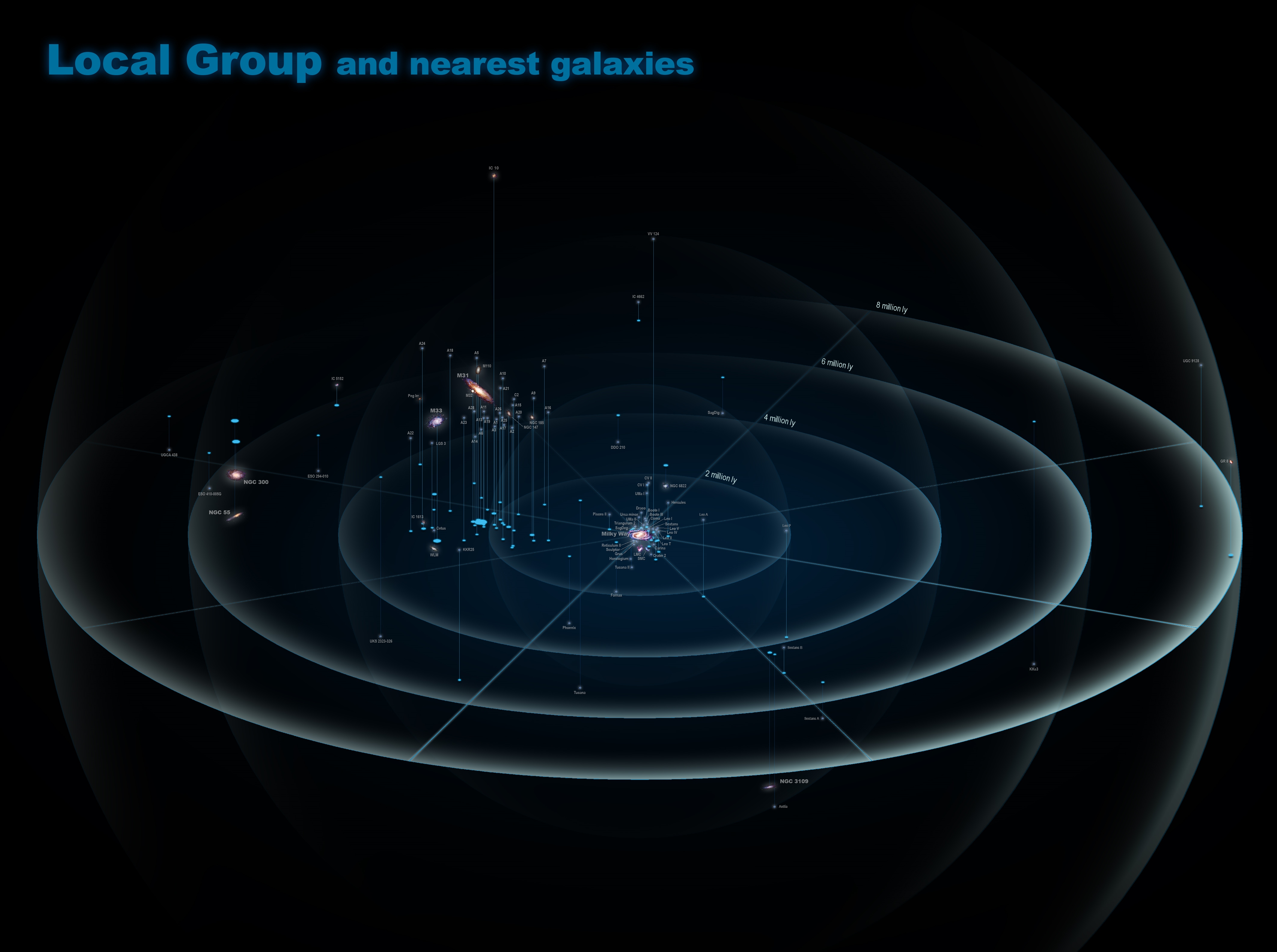Andromeda Galaxy Updated 2025-07-16
First proper nearest galaxy to the Milky Way. Everything in the middle in the Local group is either a satellite of the Milky Way or Andromeda.
As described on Wikipedia, the observational history of Andromeda is fascinating. Little by little, people noticed that it had a different nature to many other objects observed on the sky, and the hypothesis that there are other galaxies like ours grew in force.
Part of our fascination with Andromeda is due to how similar in size and shape and close it is to the Milky Way.
It is clearly the only thing so large and so close.
One can't help but wonder if there is some alien looking back at us when we are looking at them through our telescope.
Andromeda is also the furthest object from Earth that can be seen with the naked eye.[ref] Not surprising, as it literally shines with the strength of a trillion suns!
Andromeda Shun from Saint Seiya performing his Nebula Chain attack
. Source. The original Japanese music actually says "Nebula Chain" in English. The Andromeda Galaxy is shown on the back, the chain appears to go all the way to it and back towards the evil guys' head. Not very relativistic, but so be it. Galaxies nearest the Milky Way Updated 2025-07-16
The first proper galaxy near the Milky Way is the Andromeda Galaxy. Everything else in the middle is a satellite of either of of those.
Good targets for amateur astronomy Updated 2025-07-16
Looking at most astronomical object through a telescope is boring because you only see a white ball or point every time. Such targets would likely only be interesting with spectroscopy analysis.
There are however some objects that you can see the structure of even with an amateur telescope, and that makes them very exciting.
Some good ones:
- The Moon, notably crater detail.
- Saturn. Clearly visible to the naked eye, but looks like a ball. But under an amateur telescope, you can clearly see that there is a disk. Clearly discerning that the disk is a ring, i.e. seeing the gap, is a bit harder though.
- Jupiter. Clearly visible to the naked eye, it is quite huge. The four Galilean moons, being Earth-sized, are incredibly clearly visible, tested on Celestron NexStar 4SE 25mm/9mm eyepiece. Colored gas clouds are hard though, you will likely just see it bright white. www.reddit.com/r/telescopes/comments/35xrbb/how_can_i_see_the_color_of_jupiter_with_my/
- a double star. As mentioned at www.relativelyinteresting.com/10-astronomical-targets-new-telescope/ Albireo are incredibly separated. Also it is is easy to find manually being in a major well known constellation. It is no wonder it is not quite even known if they are gravitationally bound or not!
- Andromeda Galaxy. This is when things start getting hard. You can see a faint cloud, but it is not super clear that it has a center.One important understanding is that it is not possible to see stars outside of the Milky Way by naked eye.It is at this point that you start to learn that pictures of faint objects require longer term exposure and averaging of the images taken. For this you need:Just looking through the scope to immediately see something is not enough.
- a digital camera attached to the scope
- a computerized scope that slowly moves to track the point of interest
- image processing software that does the averaging
Video "Andromeda Galaxy with only a Camera, Lens, & Tripod by Nebula Photos (2020)" gives a good notion of expectation adjustment.
Local group Updated 2025-07-16
Saint Seiya Updated 2025-07-16
This was THE craze thing in Brazil before Pokemon, it was shown from 1994 to 1997. In particular the collectible action figures! It was possibly more popular in Brazil than e.g. in the US: www.quora.com/Why-was-Saint-Seiya-so-popular-in-Brazil
The thing as quite violent, rated for 14-year olds, but no one gave a fuck, 7 yo Ciro was happily watching it. We protect children too much.
That series also had quite a religious feel to it (as obviously suggested by the series English name itself). It must also have been a great motivator to getting young kids into astronomy!
Ciro's favorite character was definitely Andromeda Shun. He was smart and thoughtful, and had the coolest most complex weapon: his chain whips. He's also a bit effeminate, with his pink clothing and a gentle way. Perhaps that is the reason for adult Ciro's mild fascination with the Andromeda Galaxy.
The English name is horrendous... the Portuguese/French name is so much better: Knights of the Zodiac! Saying this in English just reminded Ciro Santilli of the Zodiac Killer. But nevermind.

